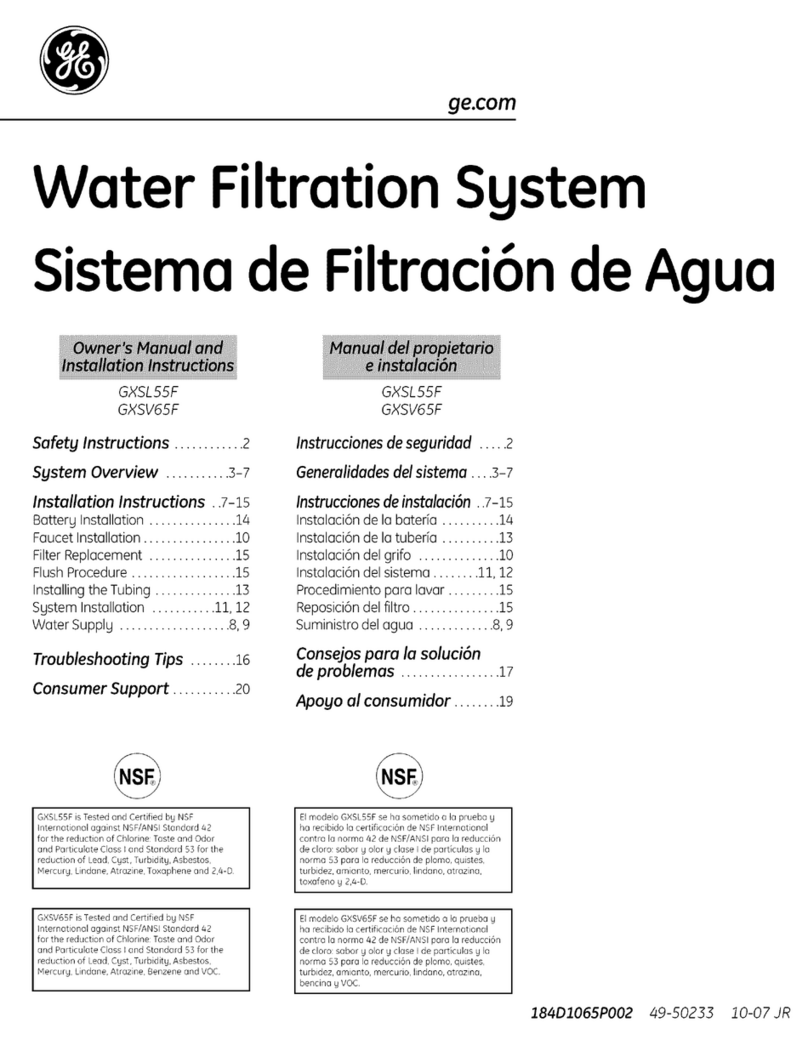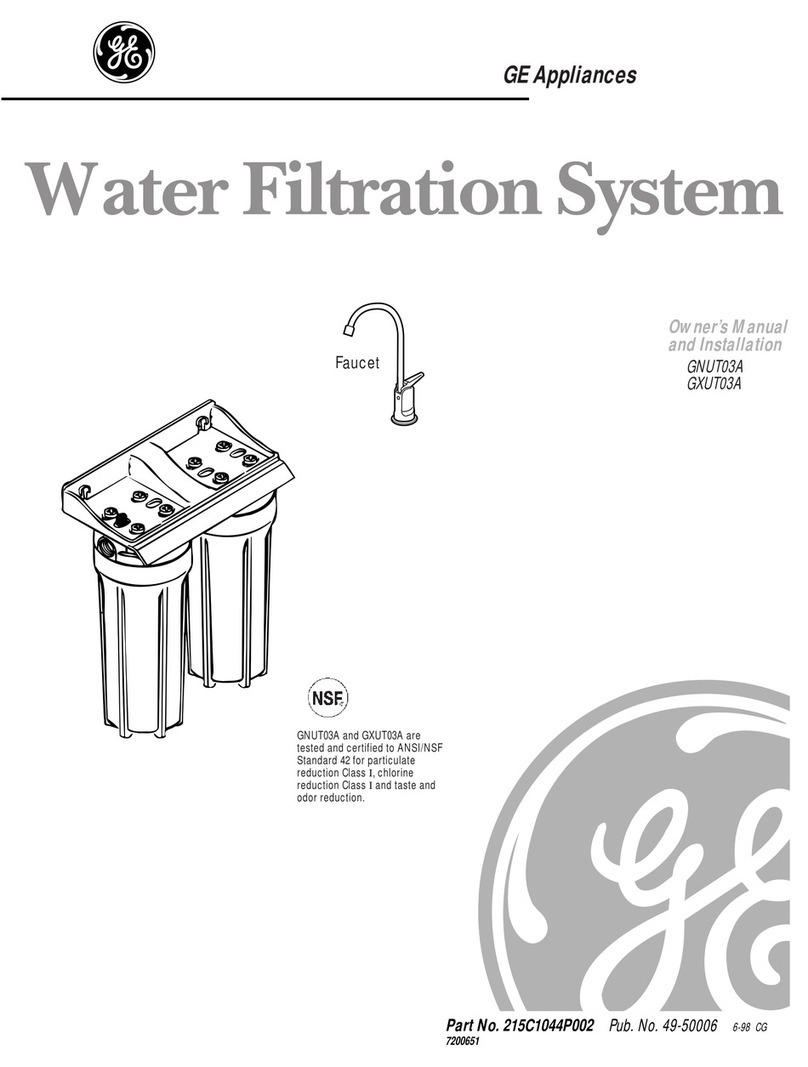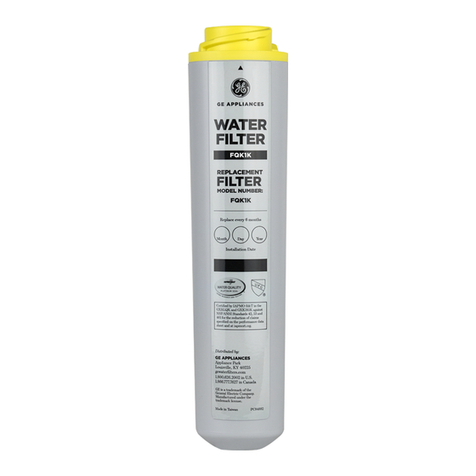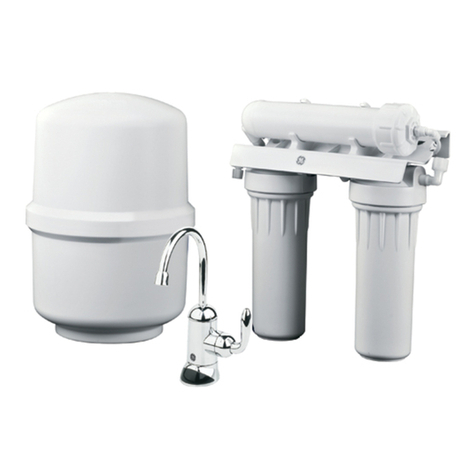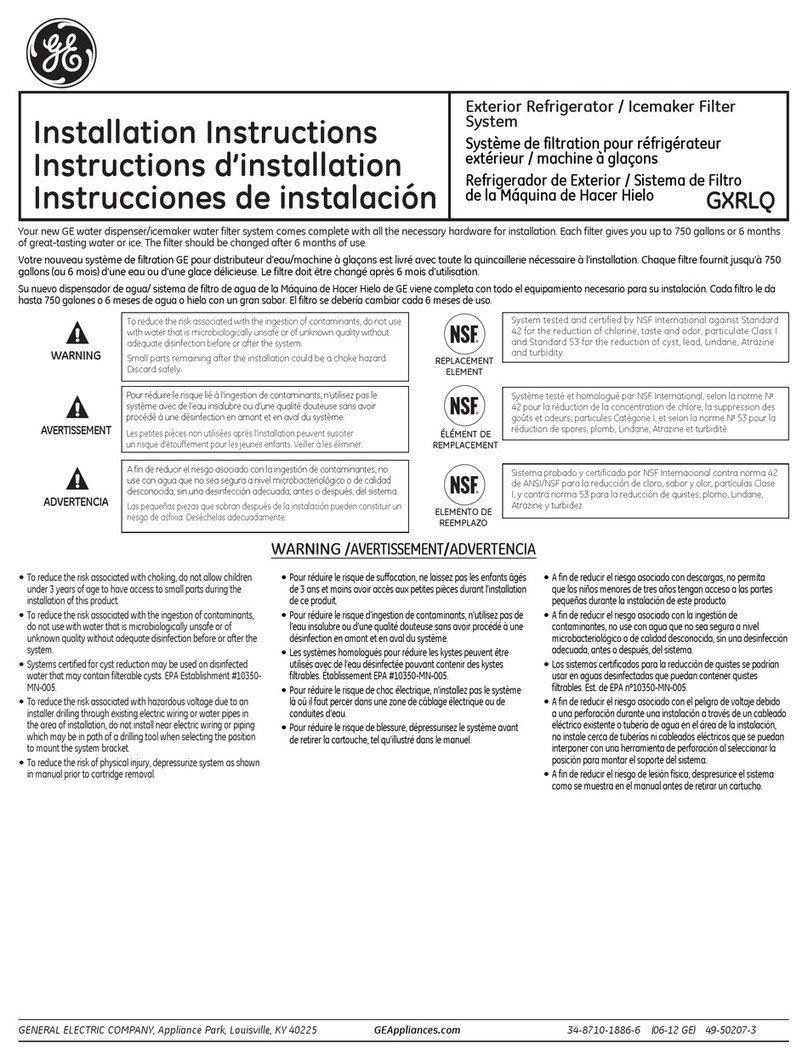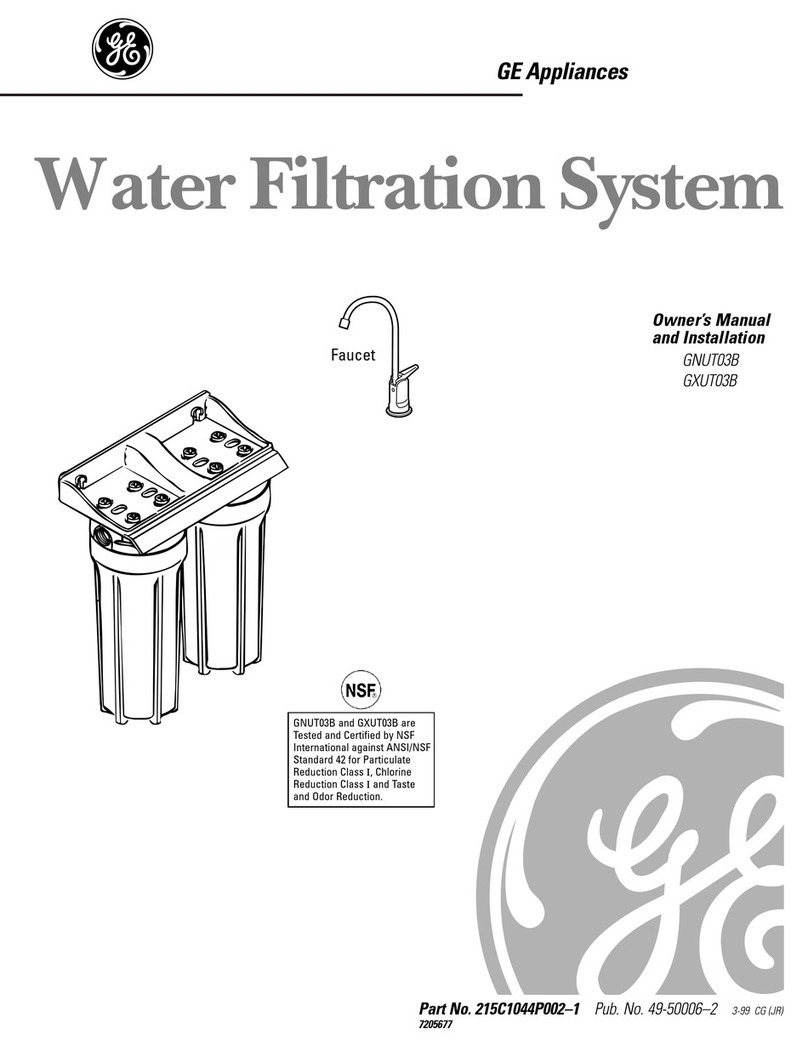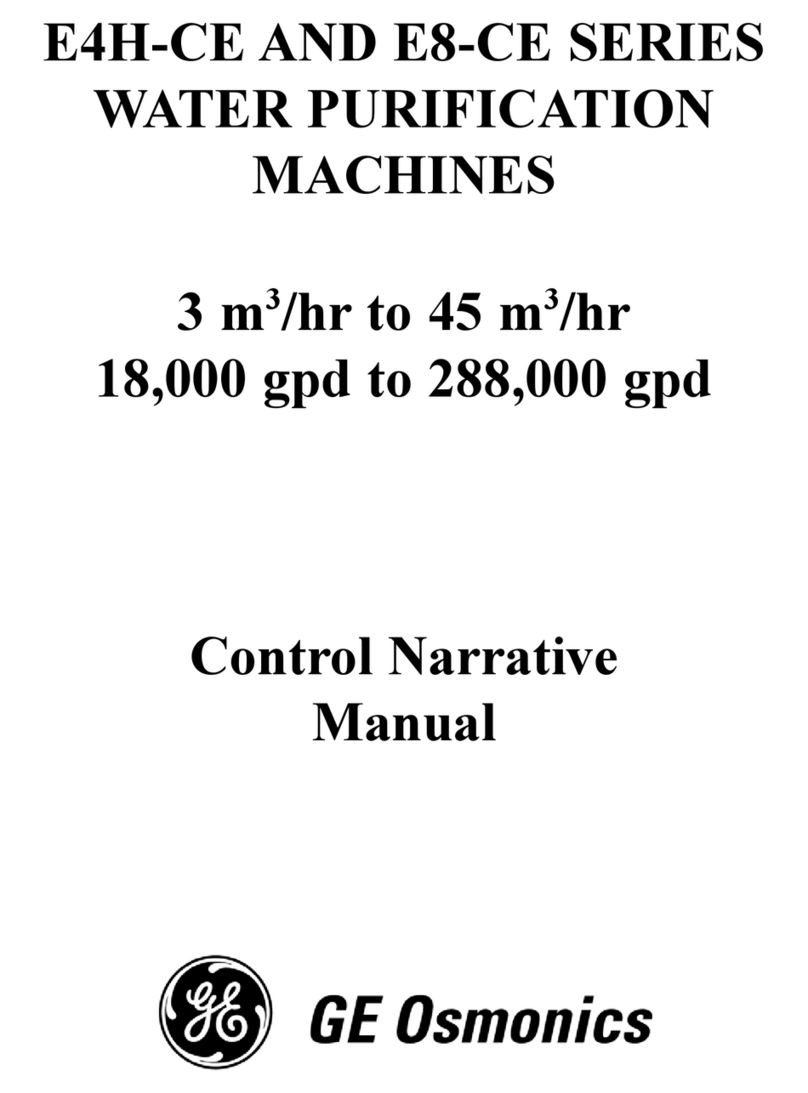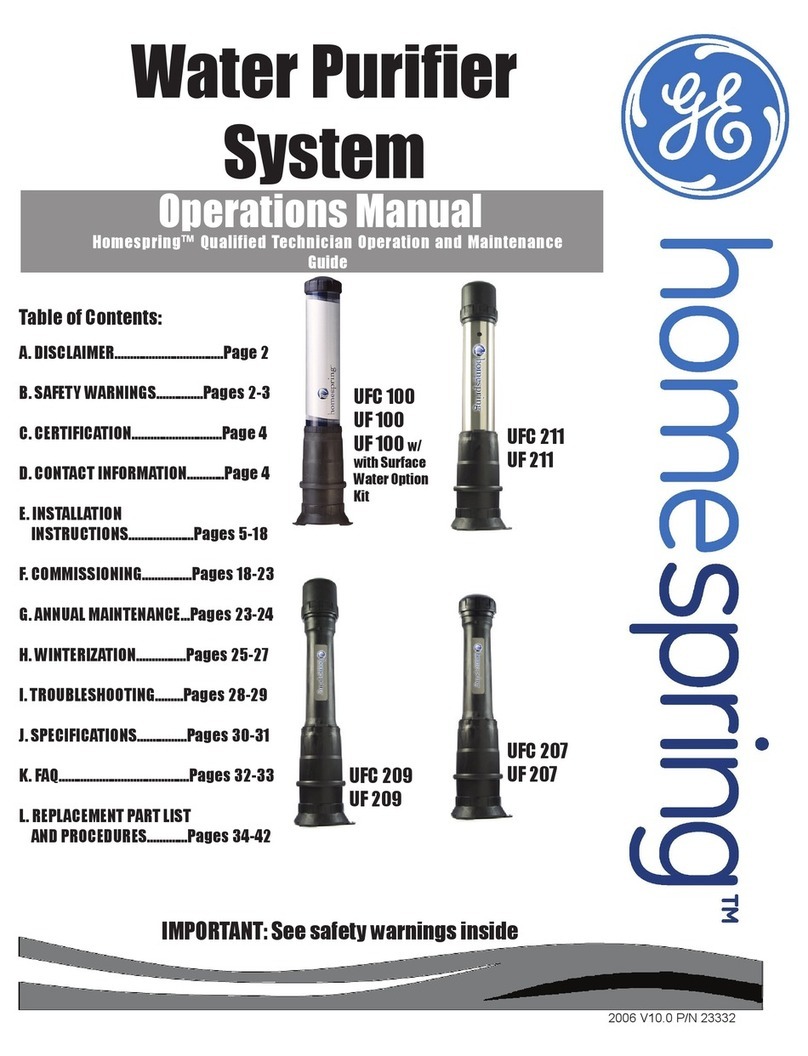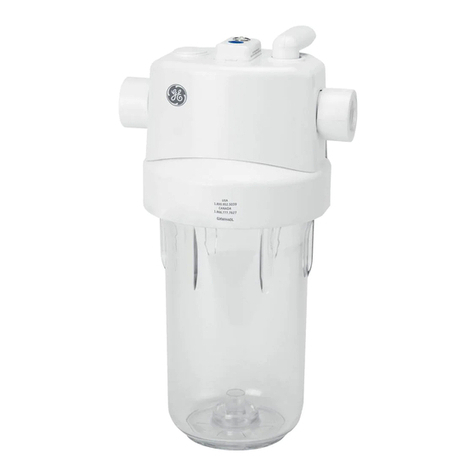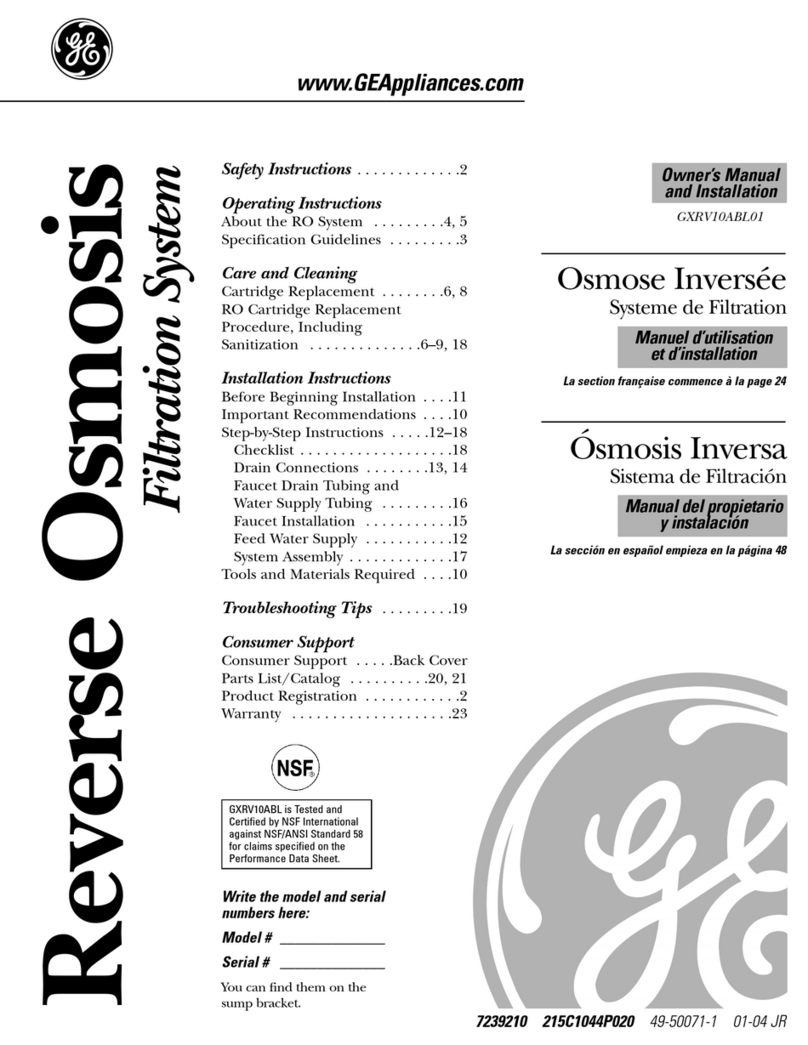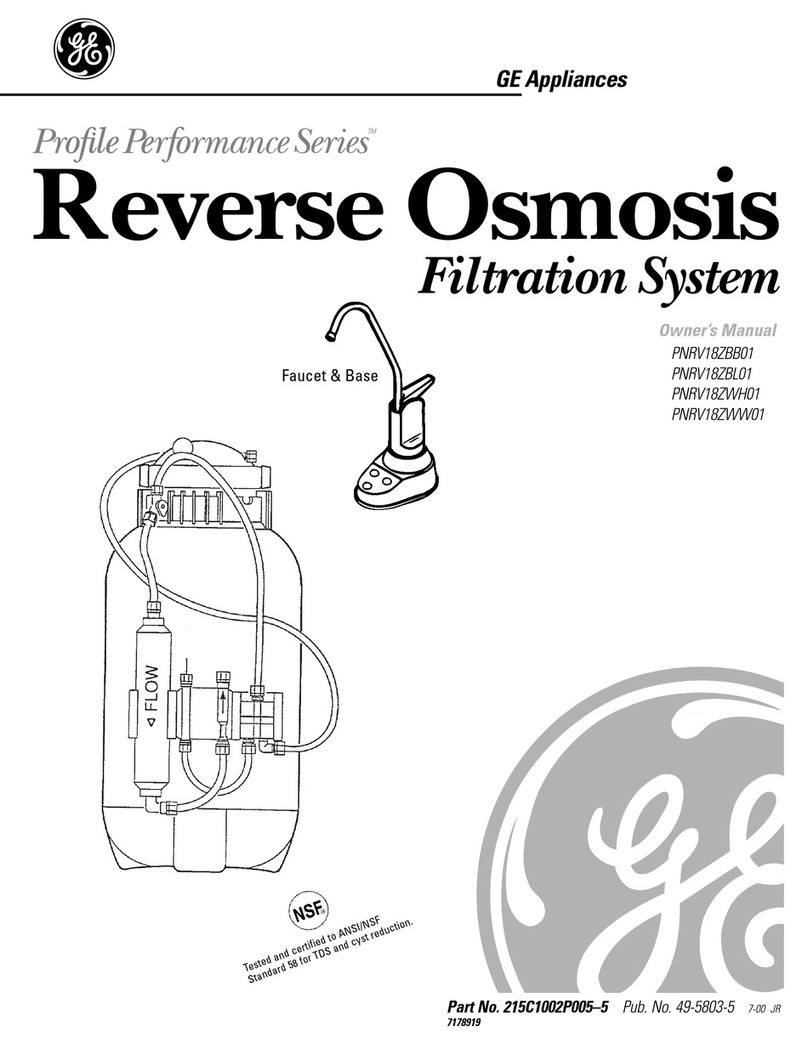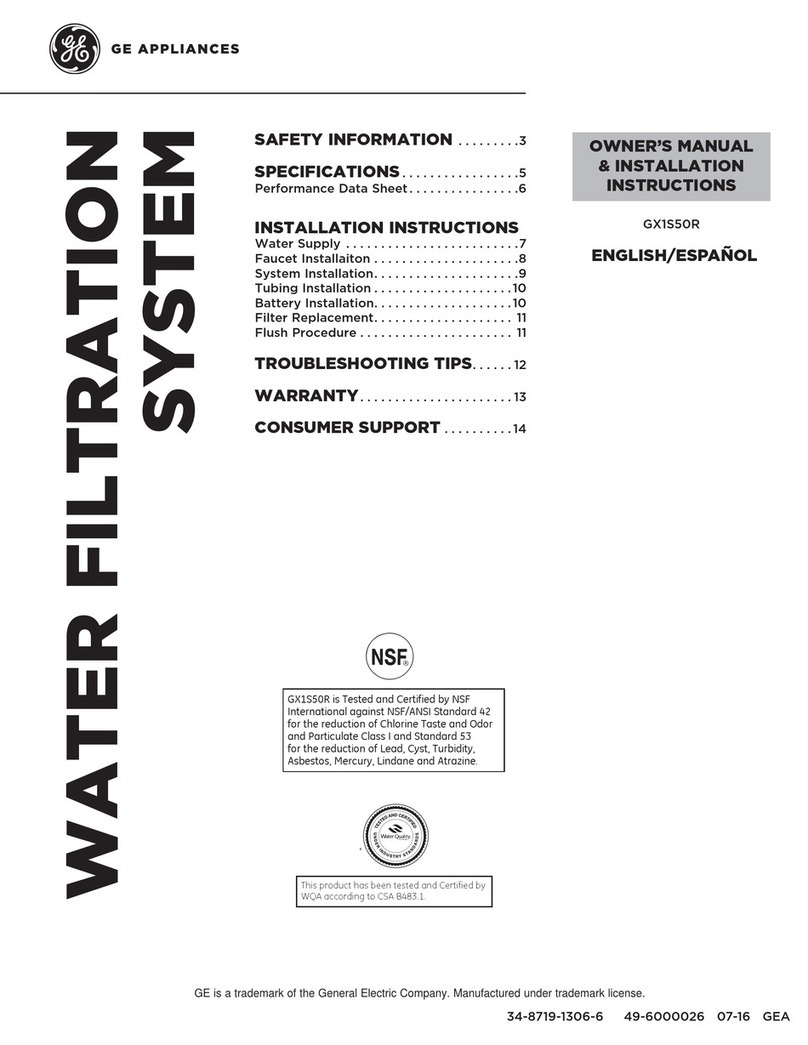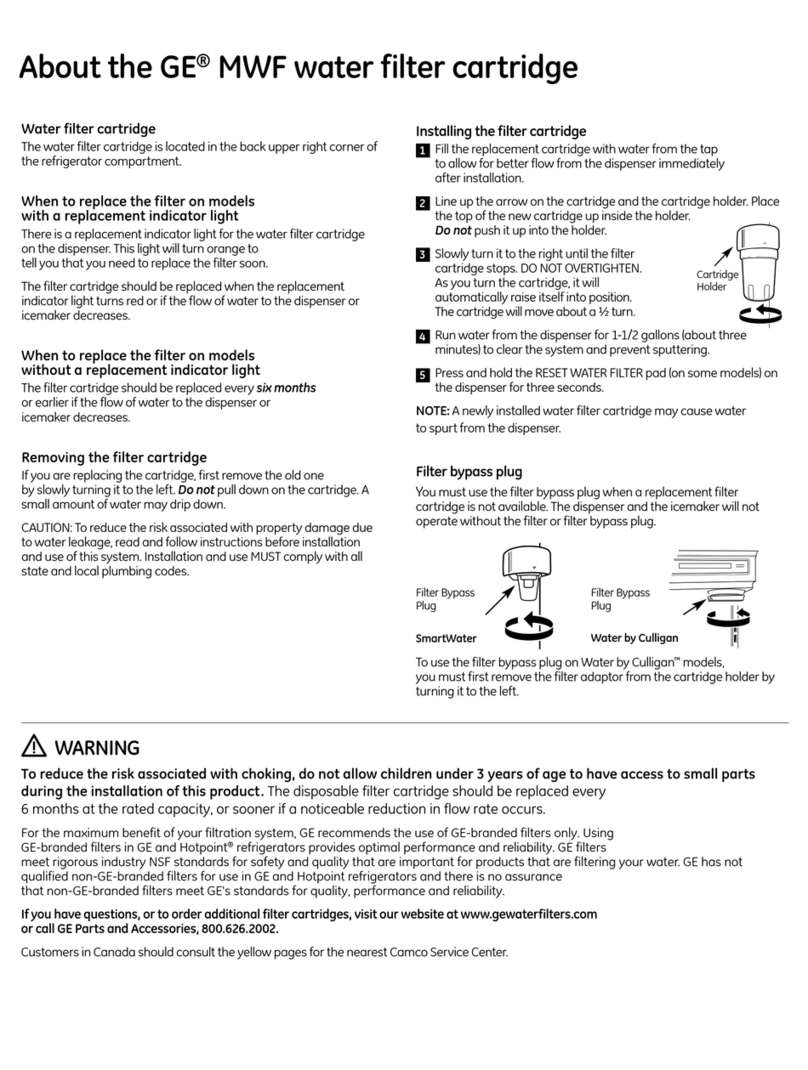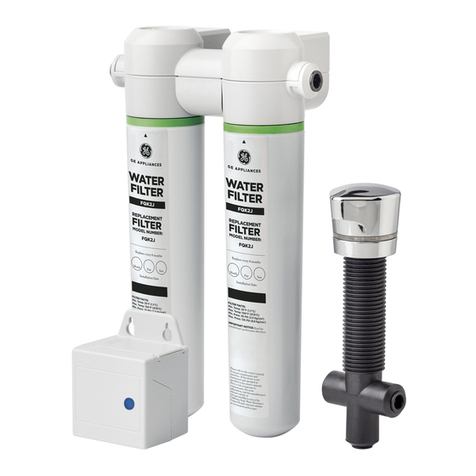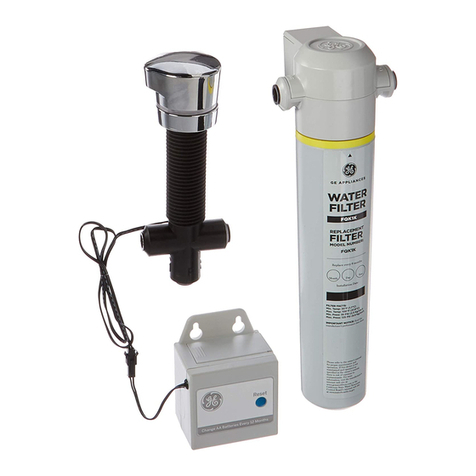
IMPORTANT SAFETY INFORMATION.
READ ALL INSTRUCTIONS BEFORE USING.
2
Be sure the water supply conforms with the Specification
Guidelines. If the water supply conditions are unknown,
contact your municipal water company or your local health
department for a list of contaminants in your area and a list of
laboratories certified by your state to analyze drinking water.
WARNINGTo reduce the risk associated with
choking:
Do not allow children under 3 years of age to have access
to small parts during the installation of this product.
WARNINGTo reduce the risk associated with
the ingestion of contaminants:
Do not use with water that is microbiologically unsafe or of
unknown quality without adequate disinfection before or
after the system. Systems certified for cyst reduction may be
used on disinfected water that may contain filterable cysts.
EPA Establishment #10350-MN-005.
WARNINGTo reduce the risk associated with
hazardous voltage due to an installer drilling through
existing electric wiring or water pipes in the area of
installation:
Do not install near electric wiring or piping which may
be in path of a drilling tool when selecting the position to
mount the filter bracket.
WARNINGTo reduce the risk of physical injury:
'HSUHVVXUL]HV\VWHPDVVKRZQLQPDQXDOSULRUWR
cartridge removal.
WARNINGTo reduce the risk of physical injury due
to hydro-pneumatic tank rupture:
Do not install if water pressure exceeds 120 psi (827
kPa). If your water pressure exceeds 80 psi (552 kPa),
you should install a pressure limiting valve. Contact a
plumbing professional if you are uncertain how to check
your water pressure.
Do not install where water hammer conditions may occur.
If water hammer conditions exist you should install a
water hammer arrester. Contact a plumbing professional
if you are uncertain how to check for this condition.
:KHUHDEDFNIORZSUHYHQWLRQGHYLFHLVLQVWDOOHGRQD
water system, a device for controlling pressure due to
thermal expansion should be installed.
WARNING To reduce the risk associated with
irritation from Sodium Metabisulphite during installation:
6RGLXP0HWDELVXOSKLWH&$6LVXVHGLQD
preservative solution within the reverse osmosis membrane.
To request an MSDS relating to this product call
203-238-8965 or visit the web at http://solutions.3m.
com/wps/portal/3m/en_us/msds (click MSDS search).
For emergencies, call 800-364-3577 or 651-737-6501 (24
hours).
WARNINGTo reduce the risk associated with
ingesting of water contaminated with sanitizer:
$IWHULQVWDOODWLRQVDQLWL]HU0867EHIOXVKHGIURPWKH
system before first use as directed within the installation
instructions.
This system has been tested for the treatment of water
containing pentavalent arsenic (also known as As(V), As(+5) or
arsenate) at concentrations of 0.050 mg/L or less. This system
reduces pentavalent arsenic, but may not remove other forms of
arsenic. This system is to be used on water supplies containing
a detectable free chlorine residual or on water supplies that
have been demonstrated to contain only pentavalent arsenic.
Treatment with chloramine (combined chlorine) is not sufficient
to ensure complete conversion of trivalent arsenic to pentavalent
arsenic. Please see the Arsenic Facts section of the Performance
Data Sheet for further information.
This reverse osmosis system contains a replaceable
component critical to efficiency of the system.
Replacement of the reverse osmosis component should
be with one of identical specifications, as defined by
the manufacturer, to assure the same efficiency and
contaminant reduction performance.
SAFETY PRECAUTIONS
SAFETY INFORMATION
Read, understand, and follow all safety information contained in these instructions prior to installation and use of the GE Reverse
Osmosis systems. Retain these instructions for future reference.
Intended use:
The GE Reverse Osmosis systems are intended for use in filtering potable water in Residential applications, and have not been evaluated
for other uses. The system is typically installed at the point of use, and must be installed as specified in the installation instructions.
Contact a plumbing professional if you are uncertain how to install.
This is the safety alert symbol. It is used to alert you to potential personal injury hazards. Obey all safety
messages that follow this symbol to avoid possible injury or death.
WARNING indicates a potentially hazardous situation which, if not avoided, could result in death or
serious injury.
CAUTION indicates a potentially hazardous situation which, if not avoided, may result in minor to
moderate injury.
CAUTION used without the safety alert symbol indicates a potentially hazardous situation which, if not
avoided, may result property damage.
WARNING
CAUTION
CAUTION
